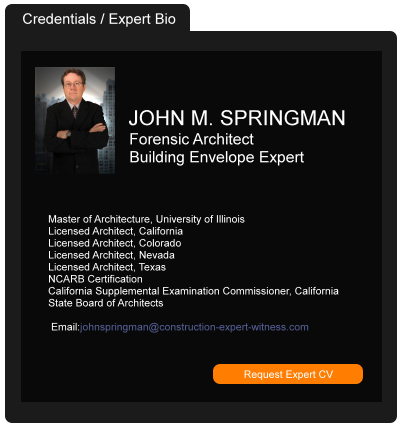How BIM Can Serve Building Owners
September 17, 2018 —
Aarni Heiskanen - AEC BusinessBuilding Information Models typically end their active life after the construction phase. An experimental project was initiated to find out whether and how they can serve owners throughout the life cycle of a building.
Gradia, the Jyväskylä Educational Consortium, provides education to students of all ages in central Finland. It has around 25,000 students, a staff of 1,100, and buildings with a total floor area of 150,000 square meters. Gradia and a team from Gravicon and XRM Finland carried out a government-supported KIRA-digi experimentation project in 2017 on the use of BIMs for building maintenance and repairs.
Read the court decisionRead the full story...Reprinted courtesy of
Aarni Heiskanen, AEC BusinessMr. Heiskanen may be contacted at
aec-business@aepartners.fi
AAA Revises Construction Industry Arbitration Rules and Mediation Procedures
July 22, 2024 —
Patrick McKnight - The Dispute ResolverThe American Arbitration Association (AAA) recently revised its Construction Industry Arbitration Rules and Mediation Procedures (“the Rules”). Several notable changes went into effect March 1, 2024, involving the scope of confidentiality, regular and fast track procedures, and updates to certain monetary thresholds.
I. Revisions to Regular Track Procedures
Rule 45: Confidentiality
For the first time, confidentiality is now the default standard. Under Rule 45(a), arbitrators must keep all matters confidential unless otherwise required by law, court order or the agreement of the parties. Rule 45(b) allows a mediator to issue confidentiality orders and “take measures for protecting trade secrets and confidential information.”
Rule 7: Consolidation and Joinder
Under the new provisions, consolidation and joinder requests must be filed before confirmation of the Merits Arbitrator’s appointment. This language eliminates a previous option that allowed confirmation up to 90 days after filing of such requests. A failure to timely respond to a joinder request will result in a waiver of objections. Now, a party must establish both good cause and prejudice for a successful joinder request after confirmation of the arbitrator.
Read the court decisionRead the full story...Reprinted courtesy of
Patrick McKnight, Fox Rothschild LLPMr. McKnight may be contacted at
pmcknight@foxrothschild.com
Construction Worker Dies after Building Collapse
November 18, 2011 —
CDJ STAFFA Bronx construction worker died when the pillars gave way in the basement where he was working. The two-story commercial building collapsed, burying Mr. Kebbeh under about six feet of rubble. The New York Times reports that firefighters dug him out with their bare hands. Mr. Kebbeh was taken to Jacobi Medical Center where he died. Two other construction workers escaped unharmed.
Read the full story…
Read the court decisionRead the full story...Reprinted courtesy of
Latosha Ellis Selected for 2019 Leadership Council on Legal Diversity Pathfinder Program
April 10, 2019 —
Michael S. Levine - Hunton Andrews KurthHunton Andrews Kurth has selected Latosha Ellis, an associate in the firm’s Insurance Coverage practice, for the 2019 Leadership Council on Legal Diversity (LCLD) Pathfinder Program. Pathfinder is a national yearlong program that trains diverse, high performing, early-career attorneys in critical career development strategies, including foundational leadership and building professional networks.
Read the court decisionRead the full story...Reprinted courtesy of
Michael S. Levine, Hunton Andrews KurthMr. Levine may be contacted at
mlevine@HuntonAK.com
Developer Sues TVA After It Halts Nuke Site Sale
December 19, 2018 —
Mary B. Powers - Engineering News-RecordThe multibillion-dollar completion of a nuclear unit at the Tennessee Valley Authority’s unfinished 1,260-MW Bellefonte plant in Alabama is in limbo after the federal power producer refused to complete its sale to Nuclear Development LLC, which has since filed a breach of contract complaint in federal district court.
Read the court decisionRead the full story...Reprinted courtesy of
Mary B. Powers, ENRENR may be contacted at
ENR.com@bnpmedia.com
Court Orders House to be Demolished or Relocated
April 26, 2011 —
Beverley BevenFlorezCDJ STAFFDecision Affirmed in Central Arkansas Foundation Homes, LLC v. Rebecca Choate
�The Arkansas Court of Appeals affirmed the decision by the trial court in Central Arkansas Foundation Homes, LLC v. Rebecca Choate. In the trial case, Central Arkansas Foundation Homes (CAFH) sought payment for a home built for Choate, while Choate alleged that the builders committed multiple construction defects including using the wrong foundation materials and positioning the house in the wrong direction.
�After the house was built, CAFH contacted Choate regarding payment, however, Choate alleged that the finished product did not match the contract. “ After CAFH completed construction, it obtained permanent home financing for Choate and tried to contact her to close the transaction. Choate did not respond until October 2005, when she sent CAFH a list of alleged construction defects, including that the house was facing in the wrong direction; that it was not built on a slab; and that the fireplace, garbage disposal, driveway, and storage area were missing. CAFH replied to Choate in writing, telling her that she had until January 6, 2006, to close on the house or CAFH would sell it. The correspondence enclosed worksheets showing that the amount Choate would owe at closing exceeded $94,000, which included interest that had accrued on the as-yet unpaid construction loan.”
�Initially, the court found in favor of CAFH. “On April 18, 2007, Choate’s attorney withdrew from representing her. Soon thereafter, CAFH’s attorney asked the court to set a final hearing on the case. The attorney purportedly sent Choate a letter by regular mail on May 15, 2007, advising her that the case was set for trial on July 9, 2007. Choate, however, did not appear. CAFH did appear, and its general manager, John Oldner, testified to events leading up to the case and the amount of damages claimed. According to Oldner, the interest on the construction loan had accrued to the point that CAFH now sought $104,965.88 from Choate. The court found in favor of CAFH and entered judgment for that amount, plus attorney fees, on July 18, 2007. The court ruled that CAFH could sell the house and either remit any excess to Choate or look to Choate for the deficiency if the sales price did not cover the judgment.”
�However, Choate successfully argued that she did not receive notice of the trial. A new trial was ordered, and the outcome was quite different. “On June 6, 2008, the circuit court entered judgment for Choate, ruling that the house was not in substantial compliance with the parties’ contract and that the contract should be rescinded. The court found that the house suffered from numerous construction defects, that the contract contemplated a slab rather than a concrete-pier foundation, and that CAFH ignored Choate’s complaints that the house was facing the wrong way. The judgment directed CAFH to hold Choate harmless on the construction loan, to deed Choate’s two acres back to her, and to remove the house from Choate’s property.”
�The Court of Appeals “found that Choate would be unjustly enriched by retaining the benefit of the septic systems and utility lines that CAFH installed on her land. The court therefore awarded $5340 to CAFH as a quantum-meruit recovery for the value of that work. CAFH contends that the award is not sufficient, but we see no clear error.” In the end, the Court of Appeals provided this reason for declining to reverse the trial court’s decision: “The court in this case apparently concluded that the house constructed by CAFH was so fundamentally at odds with Choate’s contractual expectations that she was not unjustly enriched and should simply be, as nearly as possible, returned to the status quo ante. Accordingly, the court ordered the house removed from her property and permitted CAFH to either relocate the house or salvage the house’s materials and unused appliances. We decline to reverse the court’s weighing of the equities in this manner.”
�Read the court’s decision…
Read the court decisionRead the full story...Reprinted courtesy of
Skyline Bling: A $430 Million Hairpin Tower and Other Naked Bids for Tourism
January 21, 2015 —
Toluse Olorunnipa – BloombergAmerican cities are starting an architectural arms race to the sky with super-sized Ferris wheels, a 100-story observation tower and maybe even a mammoth golf ball atop a 300-foot tee planted in the Arizona desert.
From Phoenix to Camden, New Jersey, city officials and developers are seeking to punctuate their skylines with exclamation points, vying for the world’s attention with the next Eiffel Tower or London Eye.
Read the court decisionRead the full story...Reprinted courtesy of
Toluse Olorunnipa, BloombergMr. Olorunnipa may be contacted at
tolorunnipa@bloomberg.net
More on Duty to Defend a Subcontractor
March 29, 2021 —
Christopher G. Hill - Construction Law MusingsWhile we don’t often discuss insurance coverage issues here at Construction Law Musings, occasionally a case comes up that makes the grade for a post. One such case was Erie Insurance Exchange v. Salvi, where the question of an “occurrence” that warranted coverage and defense under an insurance policy was at issue. That case discussed this key question in a residential construction context based upon poor workmanship. A recent case out of the Western District of Virginia federal court analyzed this coverage issue in the commercial context.
In Nautilus Ins. Co. v. Strongwell Corp., the Court considered a challenge by the insurance company, Nautilus, to its duty to defend based on both the definition of “occurrence” and the definition of “property damage.” Nautilus filed a declaratory judgment action seeking a declaration that it need not either defend or indemnify because the extrinsic evidence (as distinguished from the “eight corners” of the policy) precluded coverage for the types of claims made by an owner and by extension a general contractor in a separate lawsuit.
Read the court decisionRead the full story...Reprinted courtesy of
The Law Office of Christopher G. HillMr. Hill may be contacted at
chrisghill@constructionlawva.com


































































